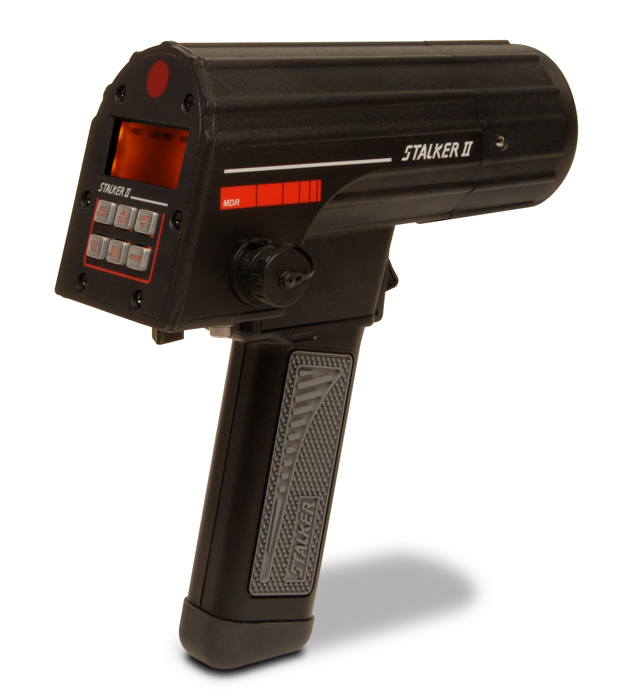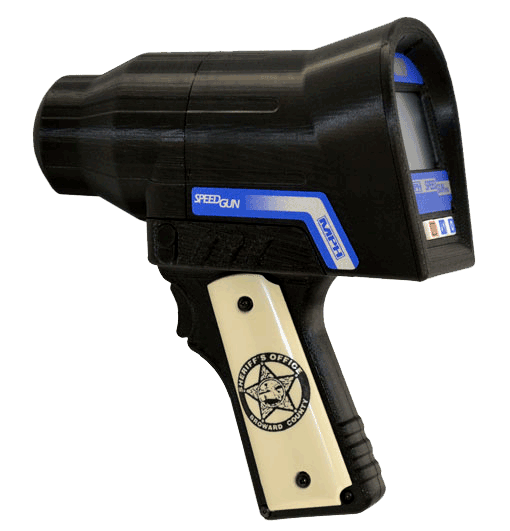Ranger EZ Ranging Law Enforcement Traffic Radar System by MPH
Ranger® EZ is the only ranging directional traffic radar on the market. Using MPH's unique Advanced Target Identification™ technology, the RANGER® EZ confirms your visual traffic observations by accurately identifying the strongest target, the fastest target, target directions, target DISTANCES, and targets in opposite and same-direction traffic.
Ranger® EZ also includes SafetyZone™, MPH's officer safety alert mechanism. SafetyZone™ activates an audible warning to alert officers to potentially life-threatening high-speed vehicles approaching from behind their patrol vehicle when the officer is standing on or near the roadway. The loud, distinctive alert signal will trigger whenever an approaching vehicle exceeds the speed and distance thresholds preset by the officer.*
Features

- New EasyTrack™ ranging bar
- Automatic Same Direction™ (ASD) mode
- Direction sensing
- Direction selection
- Moving and stationary modes
- Strongest & fastest target mode
- Patrol speed harmonic indicator
- Integrated speedometer interface
- Integrated video interface for MPH and most competitors in-car video systems
- Small display with easy-to-read LED displays
- Dual audio tones for tracking fastest and strongest targets simultaneously
- Weatherproof all-black antennas
- Continual internal diagnostic self-test
- Digital signal processing
- Ergonomic wired or wireless remote control
- Black equipment housings
- Optional motorcycle upgrade
Definitions:
- Stationary Mode: A radar mode that accurately measures speeds while the patrol vehicle is not moving.
- Opposite Direction Moving: A radar mode that accurately measures the speeds of vehicles moving in the direction that is opposite the direction the patrol vehicle is traveling.
- Fastest Vehicle Mode: A radar mode that accurately measures the speed of the fastest vehicle inside the radar beam.
- Same Direction Mode: A radar mode that accurately measures the speeds of vehicles moving in the same direction as the patrol vehicle.
- Separable Display: Describes a radar where the display unit can be detached from the radar´s processing unit and mounted separately in the vehicle.
- Wireless Remote: Describes a radar that is controlled with a cordless remote control rather than with a corded control. Most units with wireless remote controls can also be supplied with a wired remote control.
- POP Mode: A method for measuring speeds while simultaneously defeating radar detectors. Click here for more information.
- Distance Ranging: Describes a radar where the display unit can detect and display the distances of the targets being watched.
- Direction Sensing: A class of radar devices that can measure a vehicle´s direction of travel as well as its speed. Direction sensing allows Automatic Same Direction calculations as well as directional discrimination in stationary mode.
- Battery Powered: Describes a radar that is powered by an integral, rechargeable battery pack.
SafetyZone - Rear Alert Technology How does SafetyZone work?
When an officer makes a traffic stop, he can press a button to activate SafetyZone. Ranger then activates its rear antenna and alerts the officer to the presence of any vehicle traveling faster than a pre-determined speed, within a user-determined distance of the patrol vehicle.* (The officer can set the speed and distance to match his patrol situation.)
This alert is sounded in the cabin and broadcast to the officer outside of the vehicle. The external alert can use the vehicle's horn or a dedicated siren and/or light.
SafetyZone can give the officer the opportunity to move to safety and avoid dangerous vehicles. SafetyZone can save lives. See the chart below for examples of how much warning Safety Zone can give you: Vehicle
SpeedVehicle Distance in Yards 100 Yds200 Yds300 Yds400 Yds 50 mph 4.1 sec 8.2 sec 12.3 sec 16.4 sec 60 mph 3.4 sec 6.8 sec 10.2 sec 13.6 sec 70 mph 2.9 sec 5.8 sec 8.7 sec 11.6 sec 80 mph 2.6 sec 5.2 sec 7.8 sec 10.4 sec 90 mph 2.3 sec 4.6 sec 6.9 sec 9.2 sec

Distance-measuring is crucial to making SafetyZone reliable. Before Ranger, no one had developed a ranging radar for law enforcement use.
Traditional radars can only distinguish vehicles by speed or signal strength. Signal strength is a factor of both distance and the size of the vehicle, with larger vehicles giving a much larger signal strength.
In order to alert the officer to small cars close to him, a traditional radar would also overreact by alerting him to large trucks that could be over 3/4 mi. away. Officers would soon lose confidence in the alert if gave many false alarms.
Ranger´s distance information minimizes the number of false alarms of the system by filtering out the signals from large vehicles that are far from the patrol vehicle, and focusing on the speeders who are close to the patrol vehicle and are real threats to the officer´s safety.










